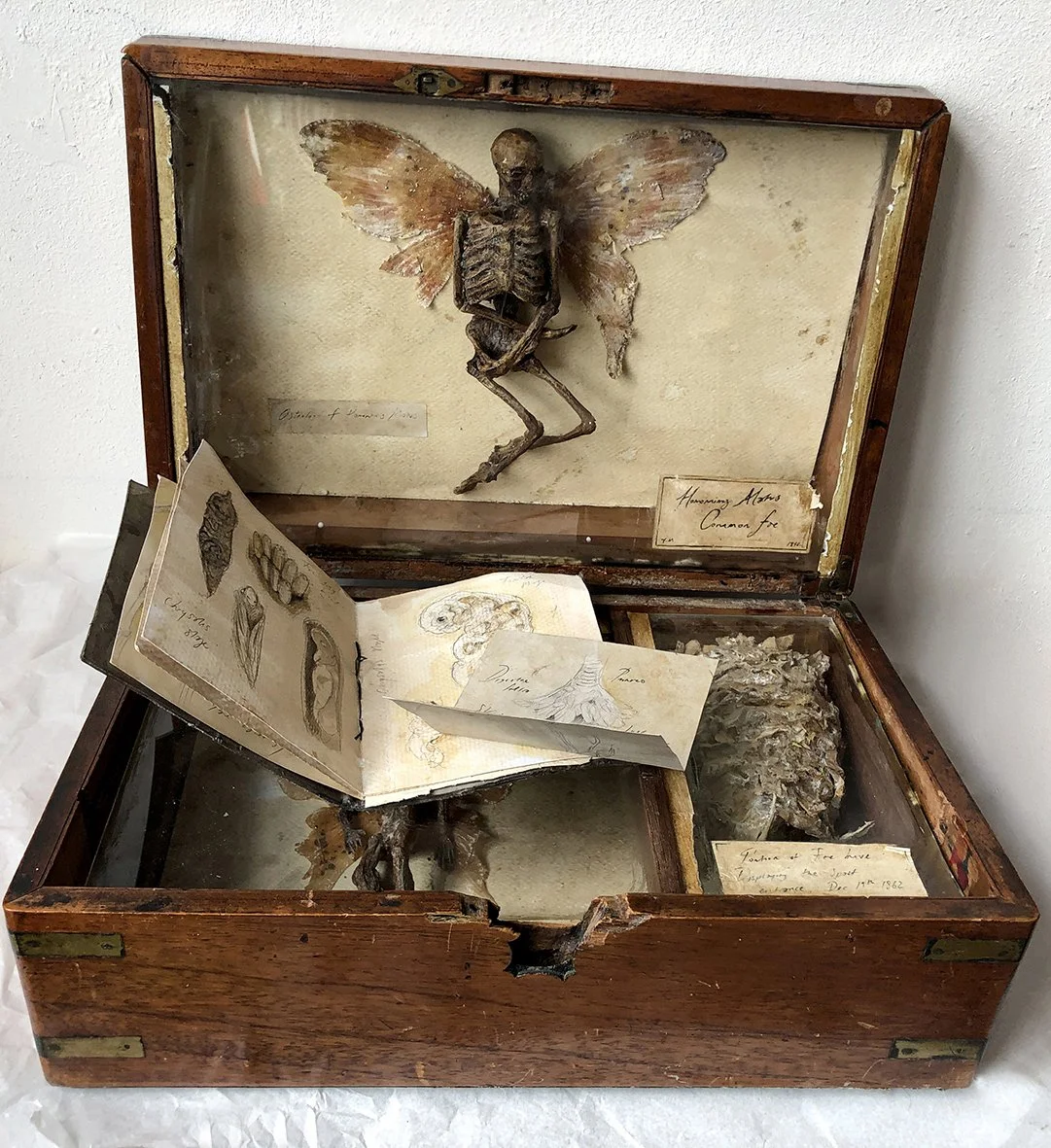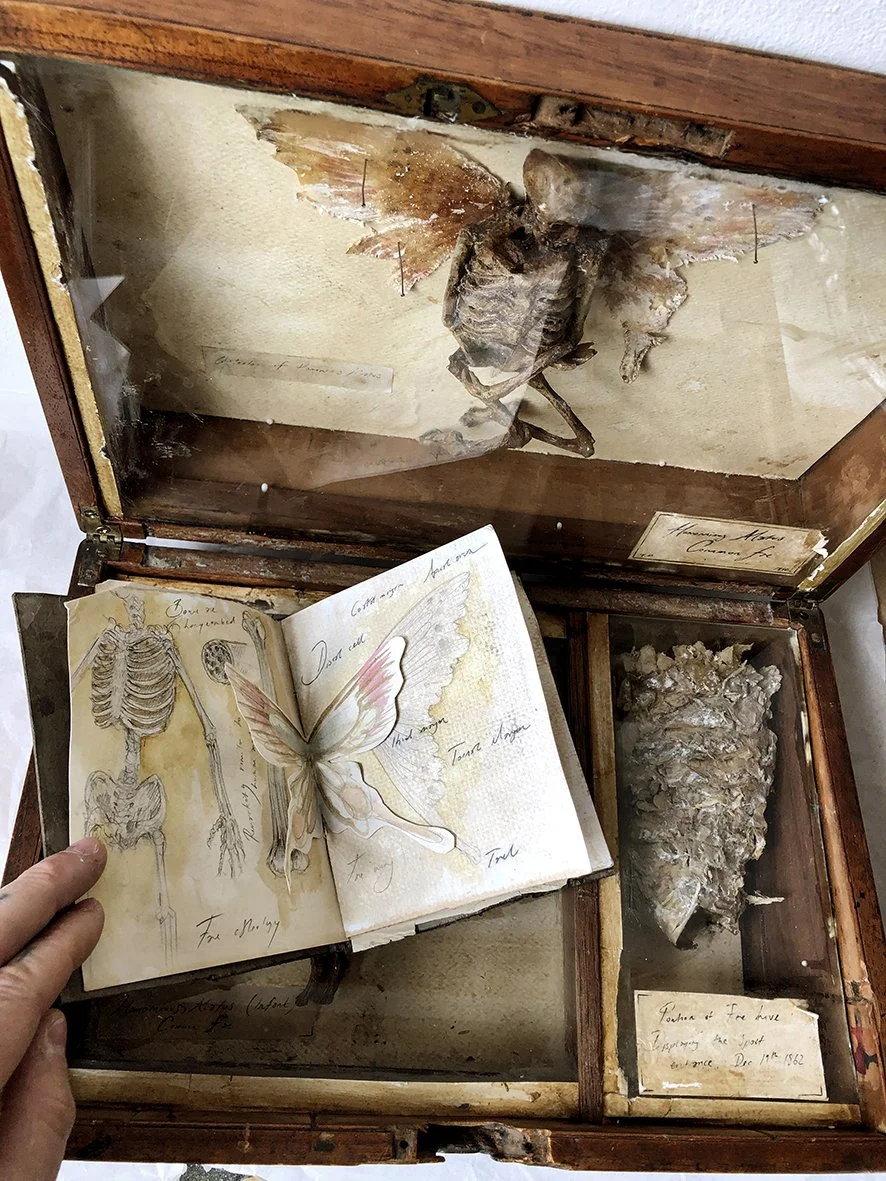Fae, or the faerie, are various species of diminutive humanoids. They are distinct from most mammals in a number of ways - for one, unlike all other mammals, certain castes present three pairs of limbs - the third forms a pair of insect-like wings that extend from the shoulder blade. Thomas speculated a great deal on the evolutionary path this species took to reach such a form. This was also an aspect his father had considered, in the application of inherited processes from one species to another. Edward would write: ‘One might look to the makings of fae as a possible path - the cross-pollination of anatomical characteristics between two distinct species, whose comparative anatomies are far removed and yet, share they do. If one were to reduce that mechanism to its constituent parts, to implement this as a means to transfer the traits of another species into a human, then one might build a man who is impervious to all.’ Another very questionable concept. We may have finally ascertained how, and why, this species evolved.
Fae have very mutable genes, and carry various genetic loads in their pheromones. It is suggested that genes are traded through pheromonal excretions, adding new genetic material to the individual. It is hypothesised that, due to the malleable nature of fae DNA, traits were exchanged between a species of insect (Homomimus arthropodus) and mammalian fae, causing a unique form of cooperative co-evolution. Larva non volucris, or Wingless fae, is possibly the closest example of what fae were before this relationship formed. True fae, and the insect-like Horst fae, have a strict caste system, and it is believed that pheromones play a role in activating the genes that trigger the growth of a third set of limbs in true fae, a trait found in all male Horst fae. Wingless fae still play a huge role within fae society, maintaining the queen and the hive itself. They will collect building materials for the hive, much like wasps. In medieval folklore, they were often described as ‘’borrowers” for their kleptomaniacal tendencies. Constant reference to people of diminutive stature fills the annals of many an occultist’s memoirs. Thomas encountered a number of fae hives, collecting ample specimens
There are many species of Arthropod fae. The aforementioned Horst fae,Homomimus dentataand Homomimus dentata, or the Tooth fae - which does not have any teeth. In fact, to all intents and purposes, they do not have any sensory equipment in their heads besides a large sphincter-like mouth. This highly dexterous opening is how they consume food. Homomimus dentata do not have a penchant for human teeth, despite the mythology. ‘Toothless fae’ was possibly the original name given to this parasitic carnivore. The tooth faerie is an invasive parasite. Introduced to the Americas by burrowing in the masts of ships, they soon encountered the mammalian species of Homomimus. From studies of invaded nests, the tooth fairy will paralyse a true fae queen, and inject eggs under the skin. As the eggs mature, they produce dexterous tendrils, which burrow into the appendages of its host, releasing a mixture of sedative and suggestive chemicals into its body. These tendrils eventually harden into limbs, consuming the host from the inside. Within a month, the body of the host will have been absorbed by the tooth faerie, leaving scraps of flesh bound to its victor. In the mounted specimen seen here, the atrophied remains of skin are still apparent over the maw of the tooth faerie. Eventually, the tooth faerie will secure the nest for itself and will release pheromones that pacify the hive. It will then eat the fae at its leisure. Homomimus dentata devastated the native mammalian Homomimus in North America, leaving it almost extinct. Very few specimens were found after the late 18th century.
Below left - Horst Fae, Middle - Tooth Fae Homomimus dentata . Right - Arachnid Fae Homomimus dentata
















